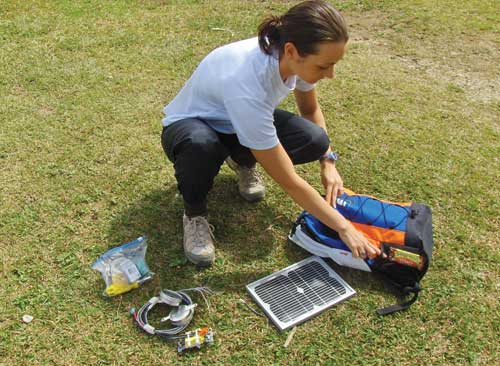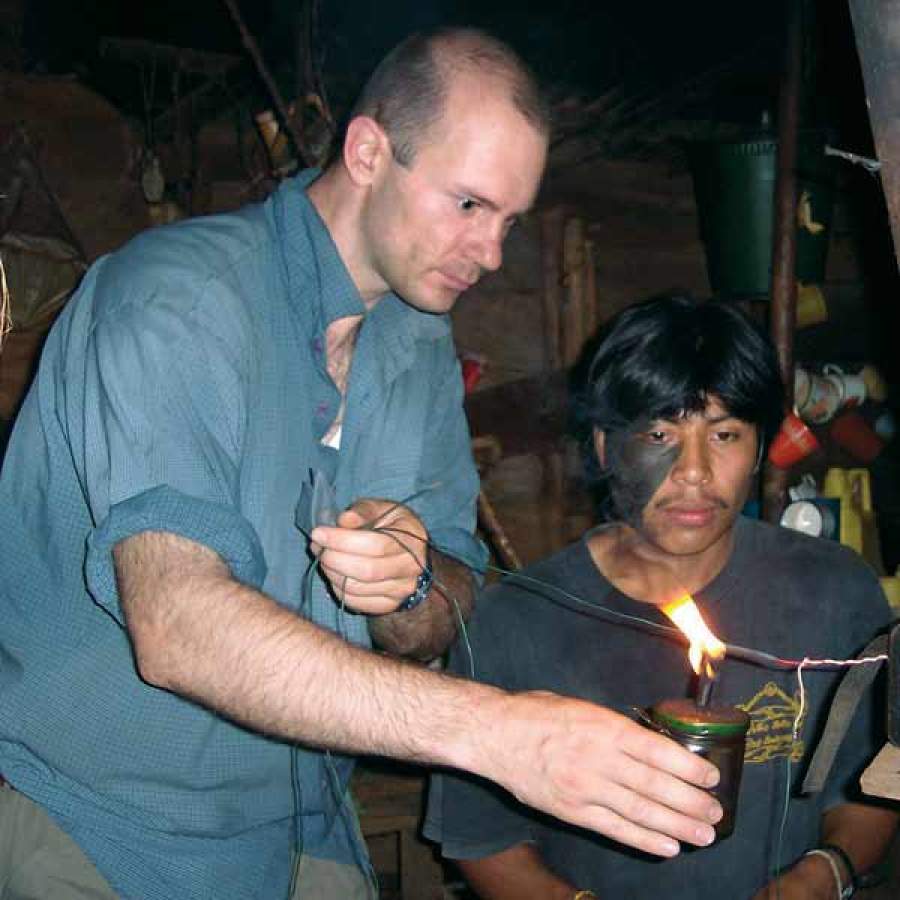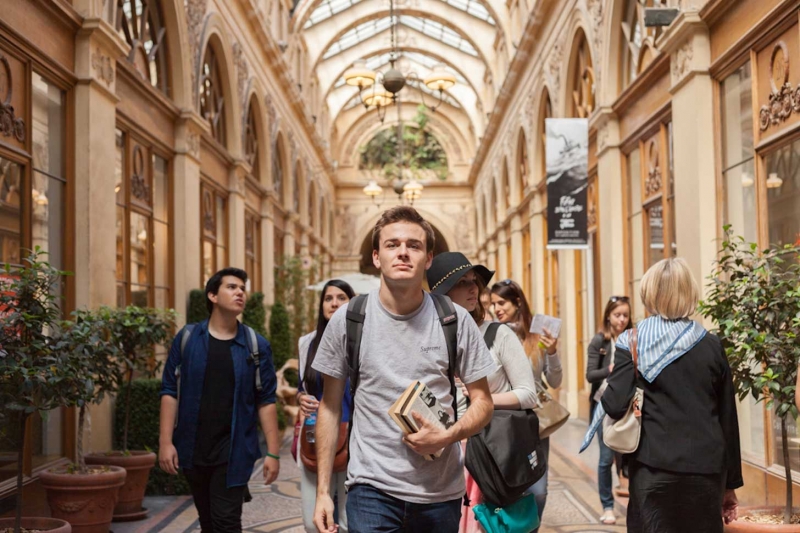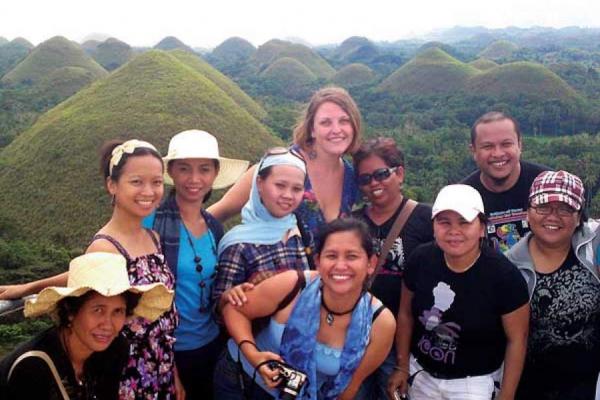For a typical Canadian student, studying after sunset is commonplace. She simply flicks on a light or two, and maybe a computer, and she’s ready to learn.
In southern Costa Rica's remote mountainous region of Talamanca, the situation is very different. A student living deep in the rainforest must rush home to study in the few hours of daylight remaining after his hour-long trek from school—instead of playing with friends. Or, he must spend his evening hours crouched over a candle or kerosene lamp. The light is poor and unsteady, the smoke black, dirty and toxic. The open flame is a fire hazard and the fuel is costly, using up as much as 30 percent of the family's income.
David Wiwchar, a former teacher and vice-principal is working to brighten this situation, with the help of high school students from northeastern Ontario’s Rainbow District School Board and the organization, Light Up the World (LUTW).
For the past three years, Wiwchar has spent his March breaks in Costa Rica, bringing solar-powered electric light to indigenous communities. Every year, Wiwchar, his wife and some Rainbow School Board teachers accompany a group of high school students to Costa Rica. There, they install lighting systems in the simple, often thatched-roofed homes of members of the Cabecar and Bribri tribes, sometimes hiking more than 15 kilometres to reach them.
In the early years of the project, Wiwchar recalls asking the communities what they spent on lighting. The answer? “We spend what we have.”
When Wiwchar asked, “What do you mean?” the response was: “Well, if you have, you spend a lot on light and you enjoy all the candles you want, every night and you just have the whole house lit up—that's nice, to have light. When you're poor, you live by the glowing embers of your cooking fire, and that's it. You only have light by the firewood you cut, and you simply don't use any kerosene at all, or candles.”
Light is especially important now, as education is more available in the region. After the Costa Rican government established a Department of Indigenous Education in 1995, the number of schools located on indigenous territories increased and so did attendance. As soon as a family has a child attending school, their lighting costs increase dramatically.
For the first time in years, since schooling arrived, we are seeing children at play.
The Cabecar and Bribri people live very traditional lives. They are primarily farmers, spreading themselves throughout the rainforest so they can practice crop rotation. “There aren't villages and town centres, which means that there will never be main hydro line-type power lines running house-to-house throughout the region,” explains Wiwchar. “It would cost thousands and thousands of dollars to run wiring to each of these homes. It will never happen, unless these people gather themselves into tight communities and stop farming the land, so it doesn't seem very likely. Solar lighting is really the only way it's going to go for these people.”
They practice subsistence farming, and typically purchase only three goods: salt, soap and kerosene or candles. According to Wiwchar, most families sell dried beans, one of their main crops, for money to buy these items. The solar lighting systems provide a quality source of light that is much brighter and healthier than a candle or kerosene lamp. “Now they can keep their food,” he says.

The project works like this: families are initially given the lighting systems. They are, however, expected to repay the cost in installments. This makes the project sustainable. The families set the rates, but the idea behind the repayment system is that they pay the same amount of money they formerly spent on kerosene or candles. The systems currently being installed cost $200, and the families are typically spending $10 to $20 a month on lighting, so it takes about two years to pay off. That money is then used to provide a lighting system for another family.
Christoph Schultz is project director at LUTW. He says another benefit of this system is that families are demonstrating that they value the equipment. “They believe enough in having the system in the home that they're actually willing to pay the money to own it. And then that means that when parts of the system fail, they will want to actually keep the system, keep paying for the system.”
The battery that holds the charge from a solar panel expires in about five to eight years, depending on usage. Families that return their used batteries receive a price reduction in the cost of replacement batteries. This, according to Wiwchar, ensures that no lead is left on the mountains, where it could be placed in a household garbage dump and leach into nearby rivers. The panels are guaranteed for 20 years, but eventually those will have to be replaced as well. “The challenge is, those systems as they are installed can last a long time and they don't need maintenance for a long time, but they eventually do need maintenance. And if you don't have a programme set up to be able to provide that maintenance, then you just have the systems fail and then people have to revert back to whatever they were using before,” explains Shultz.
The students travelling to Costa Rica transport the lighting systems legally in their luggage (about ten lighting systems fit into one average-sized suitcase), saving shipping fees, duties and taxes. During each trip, the group of students typically install about five panels over three days, and they also get to know the families receiving the systems. Technicians working for Costa Rican partner organizations, many of them trained by students earlier, install the remainder of the systems the students have brought with them.
The new lighting systems do more than just provide light. Throughout his work on this project, Wiwchar discovered that the families have energy needs beyond lighting.Most families had radios and many had cellphones that would be charged with costly generators, or taken down to village and plugged into the wall of a house with electricity—a lengthy and expensive trek. To meet the needs, this year they've increased the size of the systems they're installing to ten-watt models that allow families to simultaneously operate several lights, charge a cellphone and run a radio, without compromising light quality.
Before leaving for Costa Rica, the students help assemble the lighting systems—work that ties into part of their school curriculum.They also raise funds to purchase the panels, organizing hunger strikes, “awake-a-thons” and other events. “They've all had opportunities to raise money for people in need, but never have they had the opportunity to go and actually engage in the work until the Light Up Costa Rica project began,” explains Wiwchar.
The spark for this project was an indigenous family Wiwchar met while backpacking through a remote region of Costa Rica in 2000. He saw their struggles and wanted to help, but didn’t know how. Then he read a story in Canadian Geographic about the Calgary-based organization, Light Up the World.“I was able to… suddenly see where we could meet their needs.”
“When you're poor, you live by the glowing embers of your cooking fire, and that's it.”
LUTW was started by another teacher, Dr. Dave Irvine-Halliday, a professor of electrical engineering at the University of Calgary. Irvine-Halliday created the organization after trekking through Nepal and seeing the kerosene lamps people were using as a lighting source there. “He realized that you could build a very small-scale lighting system at a low cost,” explains Shultz, “and provide it to people at basically a fraction of the cost of what you would have to pay for a solar system that uses an incandescent light bulb, or even a compact fluorescent.” Instead, the systems use highly-efficient LED (light-emitting diode) bulbs. Since it officially became an organization in 2002, LUTW has been involved in projects in more than 50 countries around the world, helping bring light to the lives of over 300,000 people.
The Light Up Costa Rica (LUCR) project officially began in 2004, when Wiwchar, his wife Pam and their four children arrived in the Central American country. They were armed with five lighting systems funded by students at LaSalle Secondary School in Sudbury, where Wiwchar, at the time, was teaching science. The family spent two months travelling around Costa Rica, meeting with families and forming partnerships with local organizations.
The project has evolved since then. Wiwchar now works with several partner organizations on the ground in Costa Rica, including an organic farm cooperative, an indigenous rights organization and a school board. These organizations have trained technicians who install and maintain the panels, as well as staff and volunteers who collect repayments.
So far, the project has brought light to 345 Costa Rican families and 2,000 people, but there's still much more to be done. It's estimated that southern Costa Rica alone has 20,000 people who are living without electric light, and so far, the project has reached about 10 percent of them.
The lack of sustainable lighting and energy isn't limited to Costa Rica—an estimated 1.6 billion people around the world face the same situation. According to Schultz at LUTW, in recent years, this problem has extended from remote regions like Talamanca, which will probably never be part of a traditional electrical grid, to urban centres. “We're finding that in a lot of countries, we're getting a lot of requests from people who live in major cities with millions of people,” explains Schultz. “The electrical grid is set up, but it doesn't have the capacity to handle the current population because there are lots of people who are migrating to the cities, or people are living in areas which aren't served by the grid.”
Back in the Talamanca mountains, residents are pleased with the results. Wiwchar recalls a conversation one project administrator had with the elders in a community. “He asked 'How are the panels working? How are the families enjoying having light?' The elders responded, 'For the first time in years, since schooling arrived, we are seeing the children at play.' With the arrival of the lighting systems, the children leave school and go jump into the rivers and swim and play, like they haven't in recent years. Because they know that they can go do their homework by LED after supper in the evening.”
The students in Costa Rica aren't the only ones benefiting from installations. Seventeen-year-old Manitoulin Secondary School student Cassandra McColman travelled to Costa Rica with Wiwchar and 16 other students last March. “I really learned that you can be happy with not very much,” McColman says.
McColman got involved in the project because it was the only trip her high school offered that involved humanitarian work. She intends to backpack through the Middle East and Africa next year, before pursuing post-secondary studies in international law. “This has really made me think for sure I want to, while I'm away, find some place to do some volunteer work, elsewhere around the world. And, it really made me want to travel for the people, not the places.”
The trip also provides an opportunity for the Canadian students to interact with Costa Rican youth. They visit schools and the youth introduce each other to their respective cultures.
Wiwchar recalls acting as translator between a teenaged Costa Rican Jawa (healer)-in-training and two aboriginal students from the Sudbury and Manitoulin areas in Canada. The students were asking each other about ceremonies and practices in their cultures, like “Do you fast?” and “Where do you go to fast?” and “What is the purpose of your fast?” “Back and forth this interchange went,” explains Wiwchar, “and when they found commonalities, they would nod and laugh.” Wiwchar tries to promote these interactions by encouraging aboriginal youth to come on the trip, especially since the Rainbow District School Board serves the Whitefish First Nation. A trust fund has been set up to pay for First Nations students to participate in the trip.
"They've all had opportunities to raise money for people in need, but never have they had the opportunity to go and actually engage in the work until the Light Up Costa Rica project began," explains Wiwchar.
The ultimate goal of the project is to bring light to all 4,000 families in the Talamanca region. Wiwchar would like to see the project extend to indigenous populations in Panama and elsewhere in South America. He expects the project will have an effect that goes beyond bringing light to the community. “As the leaders of these communities and the leaders of the project administer the project, are successful in repayment of systems…and as community members support one another out of their own generosity and gratitude for having these systems, the sky's the limit for what can happen with these people,” says Wiwchar. “So, I think the panel arrives and provides a tool for community development.” And ultimately, an opportunity for a brighter future.
For more information about LUTW and their projects, visit lutw.org. For opportunities to get involved in the Light Up Costa Rica Project, and to learn more about helping the indigenous communities in the Talamanca region, visit lucrtours.org.
Produced with the support of the Government of Canada through the Canadian International Development Agency.
Add this article to your reading list




